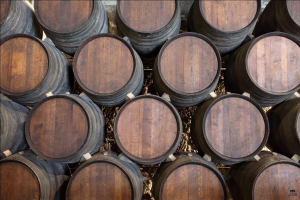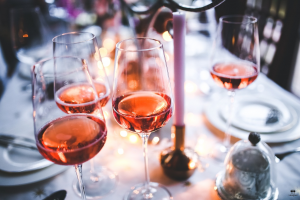WINE BARREL
 “A barrel makes wine” – this old saying is a reflection of one of the main processes in winemaking. Ripening in a barrel, the wine is enriched with countless aromatic and flavor elements, thanks to which the taste and color of the resulting drink changes dramatically. Experts believe that the quality and location of the tree can also change the final taste of the drink, as well as the grape variety.
“A barrel makes wine” – this old saying is a reflection of one of the main processes in winemaking. Ripening in a barrel, the wine is enriched with countless aromatic and flavor elements, thanks to which the taste and color of the resulting drink changes dramatically. Experts believe that the quality and location of the tree can also change the final taste of the drink, as well as the grape variety.
There is no reliable information about who exactly came up with the idea of “bringing the wine to taste” in a barrel. In the 2nd and 3rd centuries BC, they were actively used as a convenient container for transporting various goods (bulk, liquid). Only in the 12th century did Europeans notice the positive effects of wood on alcohol. Unlike any other material (clay, metal, glass), wood can breathe.
To create a wine barrel, chestnut, beech, spruce, pine and oak are most often used. Of course, oak is considered the king on this list. It is he who is able to bestow the drink with a noble bouquet and unsurpassed taste.
PROCESS OF MAKING A WINE BARREL
The process of turning a tree into a vessel requires a lot of time and effort. So that oak riveting can become a structural element, it is kept in the open air for 1.5-3 years, naturally reducing humidity to 15%. Further the design is tightened and burned. Depending on the purpose, the firing can be strong, medium and light. This process enriches the future wine barrel with aromas of vanilla and mocha, eliminating the smell of dust. In the finished oak capacity wine is sent for aging. Maturation can last from 3 months to 7 years, depending on the desired result. The duration of exposure depends on the size of the barrel. In small barrels, the process occurs fairly quickly, while in large ones, on the contrary, it slows down.
This wooden container can not only “breathe”, but also live. Barrels, like wine, have properties to grow old. The age of the barrel itself is another factor in creating the perfect drink: the younger – the richer the bouquet and the richer the color. As it gets older, the tank is covered with black bloom, in order to rejuvenate its upper black layer, and the barrel can be reused. But often after the “rejuvenation” its further use occurs away from winemaking.
Today, there are 4 main types of wine barrels in the world:
traditional, from 700 to 1000 liters, for red wines from Italy and Spain, and for white German wines.
1200 liter German Stück is used for wines from the Rhine region.
pipa The traditional option for aging port wine from 420 to 630 liters.
barric The classic version, the volume of 225 liters.




